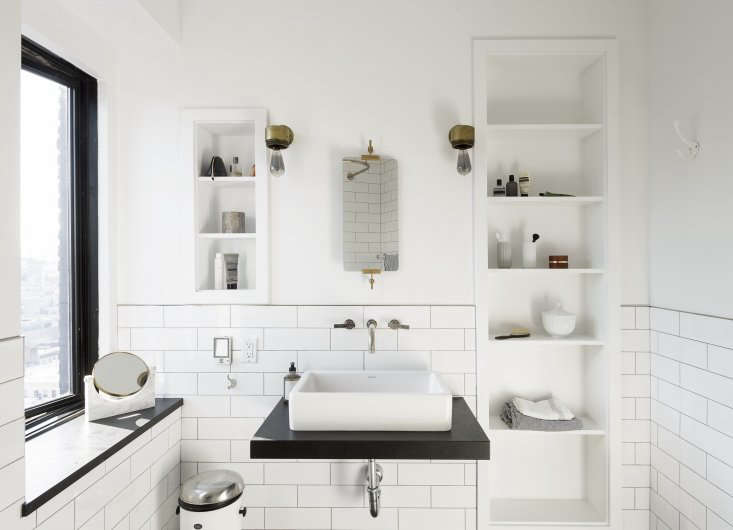Bathroom Remodeler
Renovations of any kind are a daunting process. But when it comes to the bath—a space that needs to be both hyper-functional and serene, practical and, ideally, a little bit luxe—the stakes somehow seem higher. There are a million decisions to be made along the way, from mirror to grout—and the price tag can be surprising. What to know before you begin? Take our advice:
1. Don't assume your contractor is on the same page.

"When you're functioning as the general contractor—or even working with a general contractor—you have to spell out every part of the plan, and never assume everyone is up to speed," say the mother-daughter team behind Matriarchy Build in How to Avoid Rookie Remodeling Mistakes. "Someone we know had a contractor demo the wrong bath," they add.
Think of renovations like surgery: to avoid getting the wrong knee replaced, make sure—then make sure again, then again, then one final time—that the proper knee (or bathroom) is marked and agreed upon.
2. How much does a bathroom remodel cost? More than you think.

Think you can remodel your bathroom head to toe for a couple thousand dollars? We hate to tell you: the average cost of a bathroom remodel was $11,364 in 2016, according to the National Kitchen and Bath Association (NKBA). A basic, low-grade renovation with less expensive materials or smaller swaps could run from $1,500 to $5,000, while a top-of-the-line, tip-to-toe renovation could run up to $23,000.
NKBA estimates that, broken down, most of this cost comes from fixtures and plumbing (about 29 percent), followed by counters and surfaces (21 percent), labor (20 percent), and cabinetry and hardware (16 percent). Keep in mind: they advise that, all told, your bathroom project should cost no more than 5 to 10 percent of your home's value.
3. You may want to rethink that statement-making bathtub.

You may be tempted to upgrade your bathroom with a dramatic freestanding bath. But it might not be the most practical choice going forward, particularly if you're petite, hate cleaning, have an old rickety house, like to take long baths, or take more showers than baths. Read more about the merits of built-in baths (and showers) versus freestanding options in 10 Things Nobody Tells You About Clawfoot Bathtubs, as well as in Remodeling 101: Romance in the Bath: Built-In vs. Freestanding Bathtubs.
4. Flattering lighting requires planning.
Don't think you can install a few lights and call it a day: because bathrooms are sometimes small and/or dark and filled with mirrors (which complicates how light bounces around), lighting requires careful thought and placement. The simplest way to light a bath is a single diffuse light in the center of the ceiling. Have a bathroom that's already pretty bright? A pair of wall sconces should be sufficient. Thinking about ceiling-inset downlights? Place with care: avoid installing directly over light-colored countertops (since those will reflect the lights), and place close to the wall over a vanity to maximize light when looking in the mirror. And if you spend a lot of time applying makeup, consider vertical fluorescent light fixtures on either side of the mirror. For more pro tips, see Remodeling 101: How to Install Flattering Lighting in the Bathroom.
5. Don't forget to install accessible outlets.

Source: https://www.remodelista.com/posts/what-to-know-bathroom-remodel-tips-cost/
